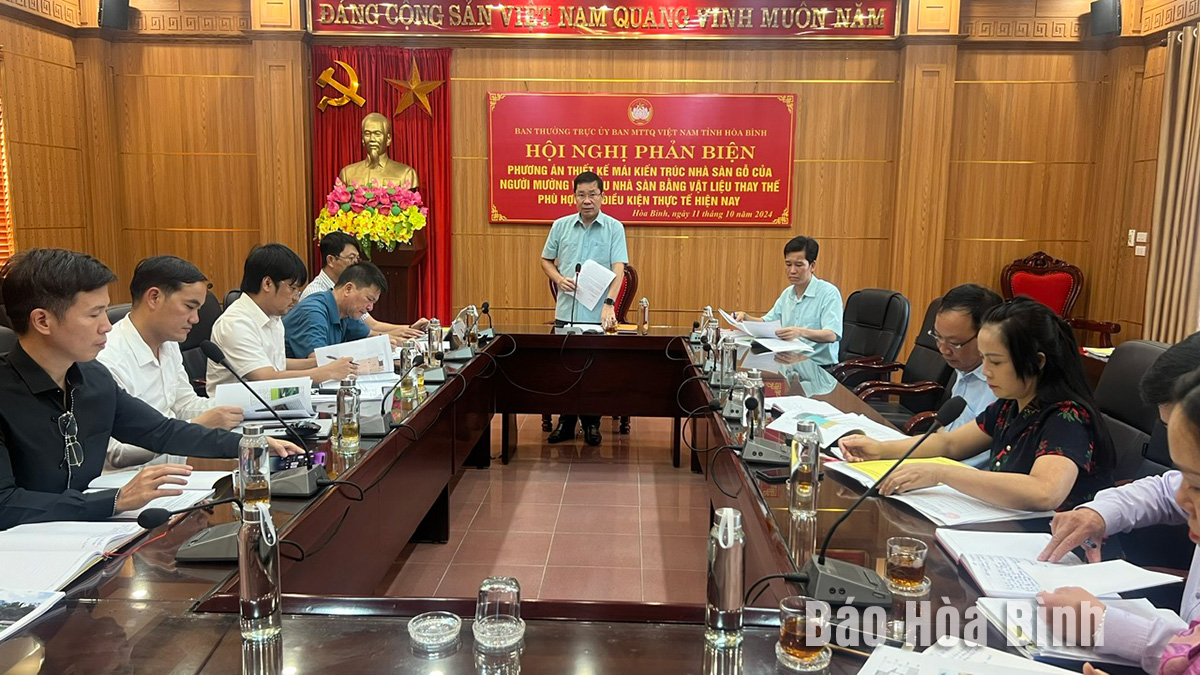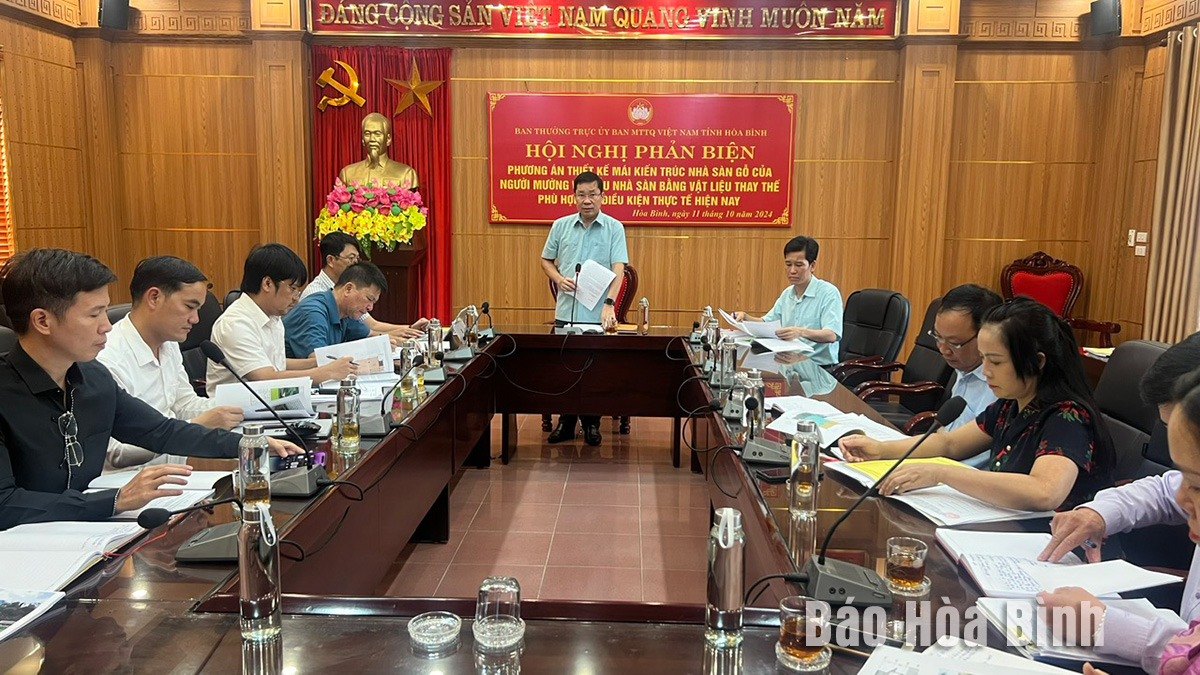
On the afternoon of October 11th, the Provincial Fatherland Front held a conference to discuss the design plan for the ancient stilt house architecture of Muong people and the stilt house model using the suitable alternative materials for current actual conditions.

The leader
from the Provincial Fatherland Front was making a speech at the conference.
According
to the statistics, currently only 10% of Muong families still retain stilt
houses, many of which have degraded due to using a lot of wood, bamboo, etc.,
putting the number of the traditional stilt houses being in risk of
disappearing, which has greatly affected the lifestyle and customs of Muong
people. To preserve and promote the national cultural identity, there is a need
for the research on the ancient stilt houses, using new replacement materials
such as cement, iron, and tiles...; The arrangement of the space inside and
outside the stilt house also has inherited changes, at the same time it must be
consistent with the development of society, overcoming limitations and
backwardness in living habits without losing the existing identity. Therefore,
it is necessary to complete the design plan for the ancient stilt house
architecture of Muong people, using alternative materials suitable to the
actual conditions, ensuring quality, efficiency and feasibility.
After
listening to the draft of the Project to preserve and promote the cultural
values of Muong ethnic group and "Hoa Binh Culture” for the period of 2023 -
2030 and the design plan for the ancient stilt house architecture of Muong
people and the stilt house model with the alternative materials suitable to
current conditions. Basically, the delegates have agreed with the content of
the Project. However, there are some opinions that the Project should use the
most common words that are easy to read and understand. It is necessary to learn
more about the standards of ancient Muong stilt houses, the functions of the
areas in stilt houses to come up with the most suitable design and choose more
diverse materials …
The
organization of the review conference aims to continue mobilizing the intelligence
and enthusiasm of the delegates to complete the design plan for the ancient
stilt house architecture of Muong people and the stilt house model with
alternative materials in accordance with the current actual conditions,
ensuring quality, efficiency and feasibility.
Receiving
the comments at the conference, the Standing Committee of the Provincial
Fatherland Front has assigned the Democracy - Law Committee to fully synthesize
and submit to the Standing Committee to send the draft to the building agency
to receive, supplement and complete.
In the spirit of "Party members go first, the people follow”, all households of Party members in the Doan Ket sub-region in Da Bac town, Da Bac district, voluntarily removed gates and fences, and donated land when the road expansion project passed through their properties. Inspired by their example, 68 households in the sub-region quickly followed suit, contributing over 1,400 sq.m of residential and perennial cropland to widen the main road through the residential area. The exemplary role of Party members in Doan Ket stands as a shining example of studying and following President Ho Chi Minh’s thought, morality, and lifestyle.
The Hoa Binh provincial People's Committee held a monthly meeting on May 29 to assess the implementation of socio-economic development tasks in the first six months of 2025, the progress of key projects, and some other important issues.
During his lifetime, President Ho Chi Minh always expressed his deep affection and special concern for children and youth. He once emphasized: "Caring for and educating children well is the responsibility of the entire Party and the entire people”; "First of all, the family (i.e. grandparents, parents, siblings) must do this job well”. "the Party Committees…, the Children’s Committee, the Youth Union, the education sector, and all related organizations must have specific plans to ensure children grow healthier and more progressive”. His teachings has been remaining valuable and serving as the guiding principles in the work of protecting, caring for, and educating children. In line with this ideology, Hoa Binh Province has continuously been prioritizing and investing resources in the well-being of children in recent years.
Mr. Nguyen Phi Long, the alternate Member of the Party Central Committee and Secretary of the Provincial Party Committee chaired the meeting of the Standing Committee of the Provincial Party Committee to provide opinions on several investment projects within the province. There was the attendance of Ms. Bui Thi Minh, the Permanent Deputy Secretary of the Provincial Party Committee and Chairwoman of the Provincial People’s Council; Mr. Bui Đuc Hinh, the Deputy Secretary of the Provincial Party Committee and Chairman of the Provincial People’s Committee and other members of the Standing Committee; the leaders from other departments, agencies, and some localities.
The Standing Board of the Vietnam Fatherland Front (VFF) Committee of Hoa Binh province held a meeting on May 28 to honour outstanding village elders, village heads, and reputable individuals from local ethnic minority and religious communities.
In mid-May, the provincial Museum organised an exhibition named "Duoi la co Dang Cong san Viet Nam quang vinh” (Under the flag of the glorious Communist Party of Vietnam). This meaningful activity took place in the joyful atmosphere to celebrate the country's major holidays and the Party congresses at all levels for the 2025-2030 term, towards the 14th National Party Congress.



